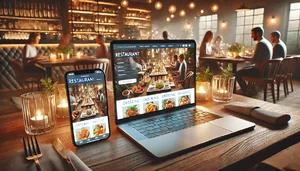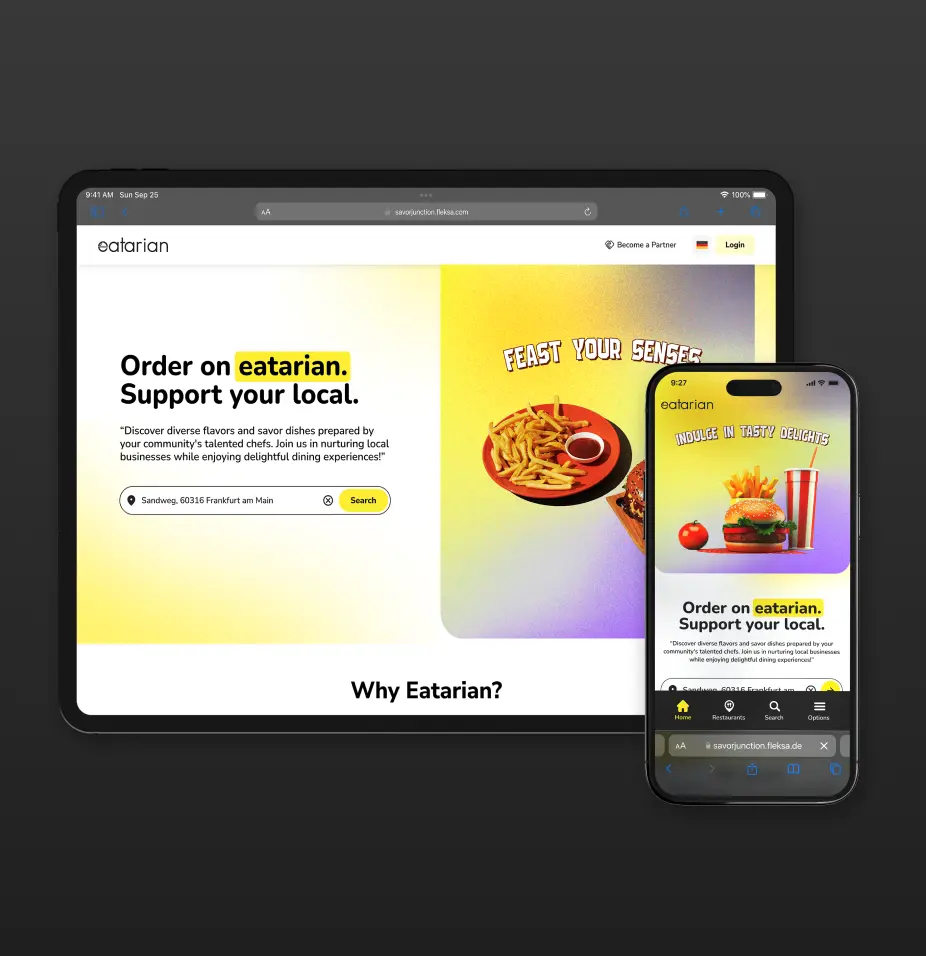The restaurant industry has witnessed a revolutionary transformation over the past few years, driven by digital solutions that aim to enhance efficiency and customer experience. In this article, we will explore the various benefits of implementing digital solutions in restaurants and the key technologies that are reshaping the way dining establishments operate. From POS, online reservations, self-service kiosks to mobile & web ordering applications, digital innovations are revolutionizing the traditional restaurant setup, offering a seamless and engaging experience for both customers and staff.
What is Digitalisation in Restaurant Industry?
Digitalisation in the restaurant industry refers to the process of integrating technology and digital solutions to enhance various aspects of restaurant operations and customer experiences. It involves adopting digital tools and systems, such as online ordering platforms, digital menus, reservation systems, contactless payment methods, and data analytics, to streamline processes, optimize efficiency, and cater to modern customer preferences. Embracing digitalisation enables restaurants to improve order accuracy, reduce wait times, gather valuable insights from customer data, and expand their reach through online marketing and delivery services. Ultimately, digitalisation empowers restaurants to stay competitive in a rapidly evolving market, providing customers with a more convenient, engaging, and efficient dining experience.
Read more: Build Perfect Restaurant Branding Strategy
The Evolution of Technology in the Restaurant Industry
Restaurants have come a long way from manual order-taking and paper-based systems. The advent of technology has paved the way for digital solutions that have redefined the restaurant landscape. From simple point-of-sale (POS) systems to sophisticated customer relationship management (CRM) software, technology has become an integral part of modern restaurant operations.
Benefits of Implementing Digital Solutions in Restaurant
Quick & Secure Payment Solutions
POS systems, or Point of Sale systems, offer quick and secure payment solutions to restaurants. With efficient transaction processing and encrypted payment methods, they streamline customer payments, reduce wait times, and enhance data security, ensuring a seamless and safe payment experience.
Streamlining Ordering Process
One of the significant advantages of digital solutions in restaurants is the streamlined ordering process. POS systems, Self-service kiosks, and mobile ordering applications allow customers to place their orders directly, reducing waiting times and minimizing order errors. This results in improved customer satisfaction and faster table turnover, increasing overall restaurant efficiency.
Enhancing Customer Experience
Digital solutions create an immersive and personalized dining experience for customers. Tabletop tablets and interactive digital menu boards provide engaging content, such as high-quality images and food descriptions, making the ordering process more exciting. Moreover, personalized recommendations based on previous orders and preferences leave customers feeling valued and catered to.
Improving Inventory Management
Accurate inventory management is crucial for running a successful restaurant. Digital solutions help automate inventory tracking, ensuring that ingredients and supplies are monitored in real time. This leads to better stock control, reduced wastage, and improved cost-effectiveness for the restaurant.
Optimizing Table Reservations
Online reservation systems allow customers to book tables conveniently through websites or mobile apps. This eliminates the need for phone calls and reduces the chances of errors in reservation bookings. Additionally, restaurants can optimize table allocation and manage peak-hour rushes more efficiently.
Key Digital Solutions for Restaurants
Online Ordering & Reservation Systems
The convenience of online ordering & reservation has revolutionized the restaurant landscape. Whether it’s through a restaurant’s website or a mobile app, customers can now place orders from the comfort of their homes or on the go. This has led to increased sales and a wider customer reach for restaurants.
Self-Service Kiosks
Self-service kiosks offer a user-friendly interface for customers to place their orders and make payments. They enable a contactless dining experience, particularly appealing in a post-pandemic world. Self-service kiosks also lead to increased upselling opportunities, as they can suggest add-ons or upsized meals during the ordering process.
Mobile Ordering Applications
Mobile ordering applications have become increasingly popular among customers due to their convenience and ease of use. These apps allow customers to browse menus, place orders, and make payments from their smartphones. For restaurants, mobile apps provide valuable data insights into customer preferences, helping them tailor their offerings accordingly.
Pay At Table
Pay-at-table solutions offer an interactive dining experience, allowing customers to browse menus, customize orders, and even directly pay while waiting for their food. They enhance the table turnover effectively and reduce the need for printed menus.
Digital Menu
Digital menu boards offer flexibility and agility in updating menu items and prices, eliminating the cost and wastage associated with printed menus. Vibrant displays and visually appealing content attract customers’ attention and influence their ordering decisions positively.
Overcoming Challenges in Implementation
Staff Training and Adoption
The successful implementation of digital solutions relies on well-trained staff who can navigate the technology and assist customers. Proper training and ongoing support are essential to ensure seamless integration into restaurant operations.
Data Security and Privacy
As restaurants adopt digital solutions that involve customer data collection, data security and privacy become paramount. Restaurants must invest in robust security measures to protect customer information from potential cyber threats.
Technical Support and Maintenance
Digital solutions are prone to technical issues, and restaurants must have reliable technical support to address any problems promptly. Regular maintenance is necessary to keep the systems running smoothly.
The Future of Digital Solutions in Restaurants
Utilizing AI-Powered Chatbots for Customer Support
AI-powered chatbots can handle customer inquiries and reservations, providing instant responses and freeing up human staff for other tasks. With their quick problem-solving abilities, chatbots enhance customer support while allowing restaurant employees to focus on more critical aspects of their roles, ultimately improving overall efficiency and customer satisfaction.
Contactless Payment Solutions
Contactless payment solutions will become the norm, providing customers with a seamless and secure payment experience. NFC (Near Field Communication) technology and mobile wallets will play a crucial role in contactless payments, enabling users to simply tap their devices for transactions. This convenient method eliminates the need for physical cash handling, reducing the risk of germ transmission and ensuring swift and efficient payments.
Digital Restaurant Marketing Strategies
Digital solutions extend beyond payment processing and encompass marketing efforts as well. For restaurants, leveraging social media platforms, email marketing campaigns, and online advertising provides an effective way to connect with a broader audience, build brand awareness, engage with customers, and entice new patrons. These digital marketing strategies offer cost-effective and targeted approaches to boost sales and foster lasting customer relationships.
Conclusion
As the restaurant industry evolves, digital solutions have become essential for enhancing efficiency, customer experience, and sustainability. Online ordering, reservations, Web & mobile ordering applications, QR code payment & ordering, and digital menu boards are just a few examples of how technology is reshaping the dining experience. To stay competitive in the market, restaurants must embrace these innovations and continuously adapt to the changing landscape of digital solutions.








